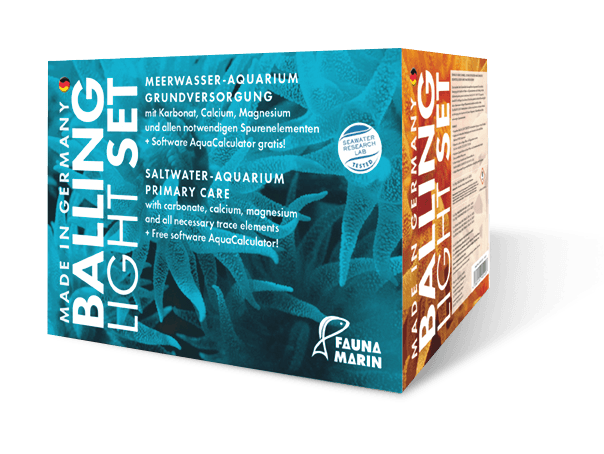Yellow matters
Yellow matters are a group of organic substances and decomposition products that colour the water yellowish. The worse the aquarium is maintained, the more these substances increase and disturb the whole reef. Yellow matters are a good indication of an excessive organic load in the aquarium system.
What’s that:
“Yellow matter” is the term for a mixture of long chain molecules, sequioterpenes, phenolic compounds and dyes. These are formed by decomposition products of algae and bacteria, residues of dyes and algae powders, e.g. from feed
Problems:
Inhibition of light energy, inhibition of matter absorption by corals and sponges, strengthening of undesirable bacteria and fungal strains in the aquarium.
Measures:
Yellow matters can be removed from the aquarium water with activated carbon, aluminium-based phosphate adsorbers, ozone addition and UV sterilisers. The regular addition of zeolite powders or Coral Balance help to keep the water clean and clear.
Indicator species:
The yellow coloration of the water is easily overlooked, especially in blue-doninated lighting. Sarcophyton leather corals quickly react with more frequent shedding, and the polyps do not perform full opening of their eight tentacles. Often light and brownish coatings are formed on the bottom substrate and glass. Lighting of daylight type appears dull and yellowish.
Value too high:
Install activated carbon or ozonizer, if necessary also UV sterilizer. Filtering via phosphate adsorber; zeolites also help. Avoid feed that is heavily enriched with dyes.
Value too low:
No dosage intended, the intention is to have crystal clear colourless water.
| Variety | organic, sequiterpenes, phenols, dyes |
|---|---|
| Benefits | none |
| Reference value | “not visible” |
| Skill Level | green |
| Source | Feed, algae |
| Available | no addition intended |
| Importance1–6 | 5 |
| Detection quality | safe |
| Relation values | none |
Yellow matter test:
This test dows not require any test set. Two white buckets are sufficient, e.g. 5 liters(1,3 US.liq.gal.). Fill one of the buckets with reef tank water and the other one with water from your reverse osmosis unit. Then compare the water colour in both buckets under daylight conditions. The tank water should be just as clear and without colour tint as the RO water. Any yellowish discoloration indicates a high concentration of yellow matters which discolour the water and disturb the corals’ absorption of nutrients via body surface. However, the yellow tint of the tank water is not directly visible in aquarium lighting with a high Kelvin value (dominance of blue spectal composition). We therefore recommend to carry out this yellow matter test regularly.

Balling Light:
The salts and trace element supplements used in Balling light are free of undesired colouring contaminants.
Tip:
Especially when using flake food and strongly coloured granulated food, keep an eye on the yellow matters of your tank water. Food with high amounts of spirulina algae add colour to the water as well as insufficient skimming or insufficient adsorber filtration (activated carbon, phosphate adsorber) will lead to an increase. Phytoplankton feed solutions can also colour the water strongly and enrich it with nutrients and trace elements.